Edgar P. Richardson Symposium
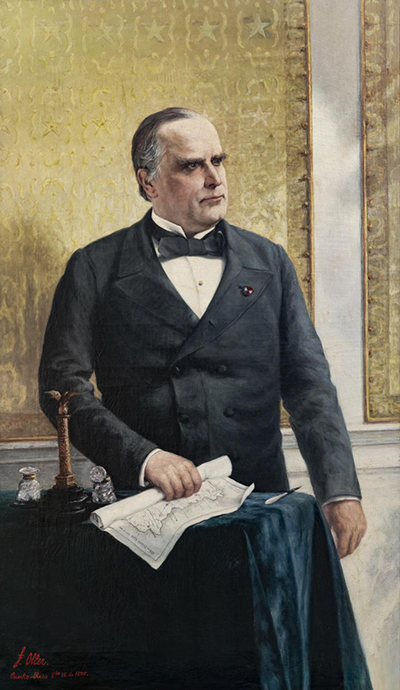
Edgar P. Richardson Symposium for 1898: U.S. imperial Visions and Revisions
September 8 and 9, 2023
The 2023 Edgar P. Richardson Symposium was organized around the landmark exhibition 1898: U.S. Imperial Visions and Revisions. Hailed by the Washington Post as some of “the best and most engaging work the National Portrait Gallery has done in a decade,” the exhibition examines the War of 1898 (the Spanish-Cuban-American-Filipino War), the Joint Congressional Resolution to annex Hawai‘i, and the Philippine-American War. Drawing on portraiture and visual culture, the symposium provided a panoramic perspective on these conflicts and shone a light on the public debates surrounding them.
The symposium convened over 40 scholars and artists from the Philippines, Guam, Puerto Rico, Hawai‘i, Cuba, Spain, the United Kingdom, and the United States for two days of panels, roundtables and gallery talks, and a keynote address by the 2022 Pulitzer Prize Winner, Ada Ferrer.
Missed the symposium? Watch it here!
https://www.youtube.com/playlist?list=PLoiUVJmnCbmC7nPaDgfm5EIE_ua5hvBnN
The Edgar P. Richardson Lecture Series in American Portraiture, 2020
“Women, Portraiture, and Power”
Webinars via Zoom
Previous Programs
Nov. 10: Combating Racism: Betsy Graves Reyneau, Laura Wheeler Waring, and Representation of Black Achievement
Presenter: Steven Nelson
Tuesday, Nov. 10 | Online via Zoom
In the 1943, the Harmon Foundation commissioned artists Betsy Graves Reyneau and Laura Wheeler Waring to make portraits of eminent Black Americans capable of highlighting black achievement and fighting white prejudice. These forty-two paintings were first shown at the Smithsonian in 1944. This discussion revisited this exhibition, exploring the intersection of gender, philanthropy, Black history and African American art during and just after World War II to showing the complex formation of this exhibition. It also sought to understand the work within the broader context of Americanness during the Second World War.
Steven Nelson is the dean of the Center for Advanced Study in the Visual Arts (CASVA), where he is responsible for its fellowships, meetings, research, and publications.
Watch now: https://youtu.be/cn_YX0QNyT8
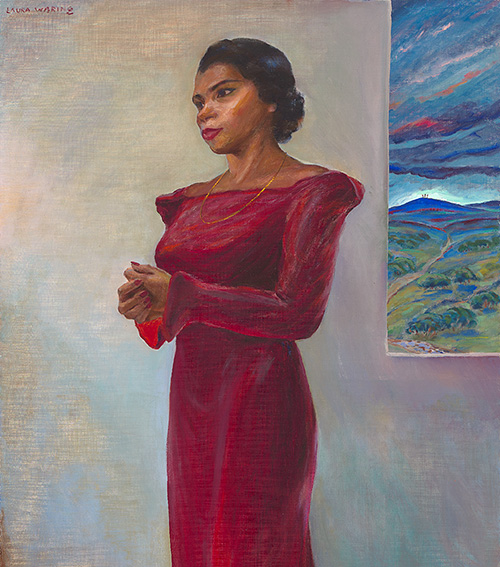
Oct. 27: The Veil and the Rebozo: Fashioning Identity in the Self-Portraits of María Izquierdo
Presenter: Mark A. Castro
Tuesday, Oct. 27 | Online via Zoom
In her self-portraits, the painter María Izquierdo boldly proclaimed herself a member of the new generation of women artists that shaped Mexican culture after the revolution of 1910–20. By wearing clothing associated with Mexico’s Indigenous communities, Izquierdo joined her contemporaries in asserting the integral role of these Native cultures in Mexico’s new national identity. At the same time, her interest in portraiture and the utilization of her own, often ambiguous, visual language, set Izquierdo apart from the cultural production of the wider Mexican art world, which was driven by nationalist interests.
Mark A. Castro is the Jorge Baldor Curator of Latin American Art at the Dallas Museum of Art (DMA)
Watch now: https://youtu.be/A0NnBs8gIX4

Oct. 20: Suzanne Valadon: An Artist on View
Presenter: Nancy Ireson
Tuesday, October 20 | Online via Zoom
Marie-Clémentine Valadon (1865–1938), who began her career as a popular artist’s model after a difficult childhood, defied the odds to become a successful painter. Henri de Toulouse-Lautrec even gave her the nickname “Suzanne,” after the biblical story of Susanna and the Elders, in which two old men prey on a beautiful bathing woman.
Valadon began exhibiting her prints and drawings in the 1880s, and in the twentieth century enjoyed considerable commercial success. Reactions to her bohemian lifestyle, however, marred her critical reception. Thus, this lecture will explore how Valadon effectively exchanged one kind of scrutiny for another.
Nancy Ireson is the Barnes Foundation’s deputy director for collections and exhibitions and Gund Family Chief Curator.
Watch now: https://youtu.be/vkje0C1FK0o
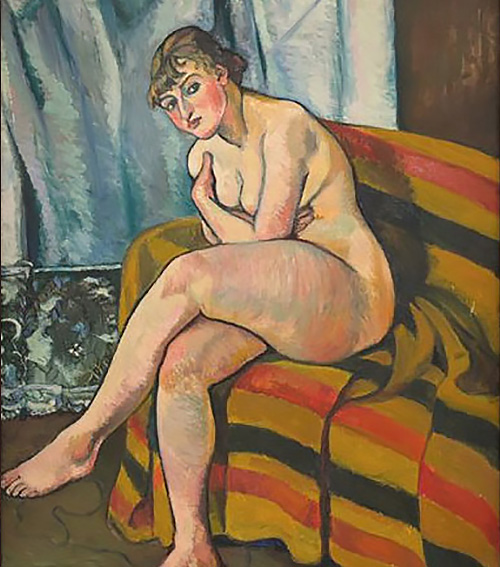
Oct. 13: Marking the Middle: Loïs Mailou Jones's Mid-Century Portrait Practice
Presenter: Rebecca VanDiver
Tuesday, Oct. 13 | Online via Zoom
During her lengthy career, African American painter Loïs Mailou Jones (1905–1998) created work in a variety of genres. Portraiture played a pivotal role in her artistic practice, from her days as an art student in 1920s Boston and her time in late 1930s Paris to her forty-five-year tenure at Howard University, and beyond. In this talk, Professor Rebecca VanDiver will examine the ways in which Jones's mid-century portrait practice enabled the artist to mark her place in the middle of the increasingly Afro-Diasporic cultural and social scenes of Paris, Washington, D.C., and Port-au-Prince.
Rebecca VanDiver is assistant professor of African American art at Vanderbilt University. She researches and teaches modern and contemporary African American art, with an emphasis on Black women artists.
Watch now: https://youtu.be/opBwxo4TDJM
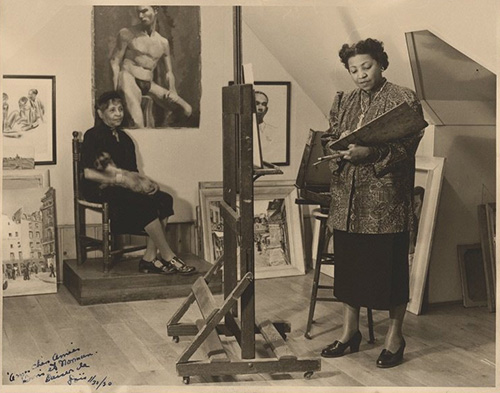
Sept. 29:Margaret of Austria, Queen of Spain: Power, Femininity, and Portraiture in the Court of Felipe III
Presenter: Ross Karlan
Tuesday, Sept. 29 | Online via Zoom
The elaborate portraits of Margaret of Austria, Queen of Spain (1584–1611), by Juan Pantoja de la Cruz and Andrés López Polanco, are known for their depictions of the crown jewels and elegant clothing characteristic of Hapsburg portraiture. Yet this series, painted between 1605 and 1610, also presented Queen Margaret as a strong female ruler. Pantoja de la Cruz and Polanco portrayed the queen as both virtuous and feminine as well as politically cunning. This balance was particularly delicate within the contexts of dynastic factions, political alliances, and the rebirth of Spain’s royal portrait collection after it was destroyed in the 1604 fire at the Royal Palace.
Ross Karlan earned his PhD at Georgetown University with a focus on Portugal and Spain in the fifteenth and sixteenth centuries.
Watch now: https://youtu.be/DAR63UqMfv4
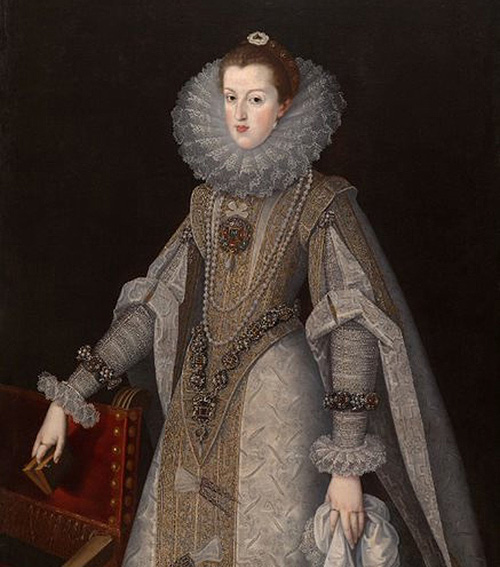
Sept. 15: The Interiority of Belonging: Miki Hayakawa's Portraits
Presenter: ShiPu Wang
Tuesday, Sept. 15 | 5:00 p.m.| Online via Zoom
Who is Miki Hayakawa (ミキ早川, 1899–1953)? Why is there so little known about the work of an artist who held her first solo show of 150 paintings in San Francisco in 1929, was selected for the inaugural exhibition of the San Francisco Museum of Art in 1935, and contributed to Santa Fe’s vibrant art scenes alongside the likes of John Sloan and Alfred Morang? Professor ShiPu Wang shares discoveries from his journey of piecing together Hayakawa's oeuvre and life and explores how portraiture served as a vital means for her to forge multicultural connections in diverse communities during the Exclusion Era.
ShiPu Wang is the Coats Endowed Chair in the Arts and professor of art history at the University of California, Merced.
Watch now: https://youtu.be/mbJVE1ldqXE
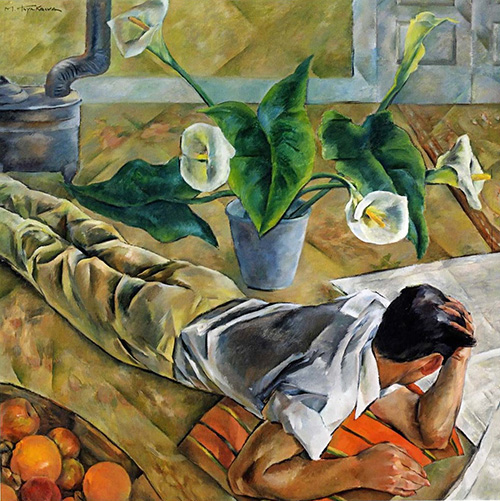
The Edgar P. Richardson Lecture Series in American Portraiture is generously supported by the Edgar P. Richardson Fund.
Edgar P. Richardson Symposium: "New Perspectives on Portraiture"
September 20 & 21, 2018
The National Portrait Gallery’s Scholarly Center, PORTAL = Portraiture + Analysis, held its Edgar P. Richardson Symposium “New Perspectives on Portraiture” in the museum’s Nan Tucker McEvoy Auditorium on September 20 and 21, 2018. The two-day event brought together scholars whose work expands people’s perceptions of the diversity and complexity of portrayal in portraits. Speakers investigated the power dynamics between artists and their sitters, the manipulation and evolution of portraits as physical objects, the dissemination of images and other aspects of this artistic genre.
Portraits are subject to the vagaries of time and place, physical change, translocation and new modes of interpretation and display. The National Portrait Gallery’s 50th anniversary provided an opportunity to assess the study of portraiture. Recent scholarship revived an interest in analyzing a genre clearly distinct in many ways from other art forms. As images, likenesses reflect codes of behavior, social and political environments, and the visual rhetoric of their day. Portraits reference issues of identity and subjectivity, such as gender, race and ethnicity.
The symposium featured a panel of scholars from around the country who offered insight from their areas of expertise on the evolution of portraiture and its influence on the nation’s identity. The two days of programming concluded with a book signing and public reception in the museum’s Kogod Courtyard.
Program Schedule
Thursday, Sept. 20, 2018
Session 1: Materiality and the Profession of Portraiture
Individual presentations to be followed by panel discussion moderated by Kim Sajet, Director, Smithsonian’s National Portrait Gallery
Session 1: Opening remarks and introductions by Kim Sajet
Terri Sabatos, associate professor of art history, Longwood University
“Body Politics: Copley’s Portraits as Political Effigies During the American Revolution”
Jennifer Van Horn, assistant professor of art history and history, University of Delaware
“Prince Demah and the Profession of Portrait Painting”
Juanita Solano Roa, Ph.D. candidate, Institute of Fine Arts, New York University
“The Other’s Other: Portrait Photography in Latin America, 1890–1930”
Taína Caragol, curator of painting and sculpture and Latino art and history, Smithsonian’s National Portrait Gallery
“Meaningful (Dis) placements: The Portrait of Luis Muñoz Marín by Francisco Rodón at the National Portrait Gallery”
Session 2: Dissemination: Furthering Social, Political, Economic and Religious Agendas
Individual presentations to be followed by panel discussion moderated by Wendy Wick Reaves, curator emerita of prints and drawings, Smithsonian’s National Portrait Gallery
Session 2: Introduction by Wendy Wick Reaves
Ross Barrett, associate professor of American art, Boston University
“‘Capital Likenesses: George Washington, the Federal City, and Economic Selfhood in American Portraiture”
Kate Clarke Lemay, historian and director of PORTAL, the Portrait Gallery’s Scholarly Center, Smithsonian’s National Portrait Gallery
“Reconstruction Reconsidered: The Gordon Collection of the National Portrait Gallery”
Christopher Allison, collegiate assistant professor in the humanities, affiliate faculty member in the Departments of History and Art History, University of Chicago
“Cloud of Witnesses: Painting History Through Combinative Portraiture”
Friday, Sept. 21, 2018
Session 3: Reassessing Subjectivity
Individual presentations to be followed by panel discussion moderated by Kate Clarke Lemay, historian and director of PORTAL, the Portrait Gallery’s Scholarly Center, Smithsonian’s National Portrait Gallery
Session 3: Opening remarks and introductions by Wendy Wick Reaves and Kate Clarke Lemay
Akela Reason, associate professor of history, University of Georgia
“Soul-Searching: The Portrait in Gilded Age America”
Amy M. Mooney, associate professor of art and art history, Columbia College, Chicago
“Photos of Style and Dignity: Woodard’s Studios and the Delivery of Black Modern Subjectivity”
Jonathan Frederick Walz, director of curatorial affairs and curator of American art, The Columbus Museum
“Side Eye: Early Twentieth-Century American Portraiture on the Periphery”
Richard H. Saunders, director, Middlebury College Museum of Art, and professor of history of art and architecture, Middlebury College
“Making Sense of Our Selfie Nation”
Session 4: Theatricality, Performativity, and Play
Individual presentations to be followed by panel discussion moderated by Asma Naeem, curator of prints, drawings and media arts, Smithsonian’s National Portrait Gallery
Session 4 Introduction by Asma Naeem
Erin Pauwels, assistant professor of art history, Temple University
“‘Let Me Take Your Head’: Photographic Portraiture and the Gilded Age Celebrity Image”
ShiPu Wang, professor of art history and founding faculty of the Global Arts Studies Program, University of California, Merced
“Playing Against Type: Frank Matsura’s Photographic Performances”
Anne Collins Goodyear, co-director, Bowdoin College Museum of Art
“Call it a Little Game Between ‘I’ and ‘Me’: Mar/Cel Duchamp in the Wilson-Lincoln System”
Nikki A. Greene, assistant professor of art history, Wellesley College
“Habla LAMADRE: María Magdalena Campos-Pons, Carrie Mae Weems, and Black Feminist Performance”
Reception and Book Signing